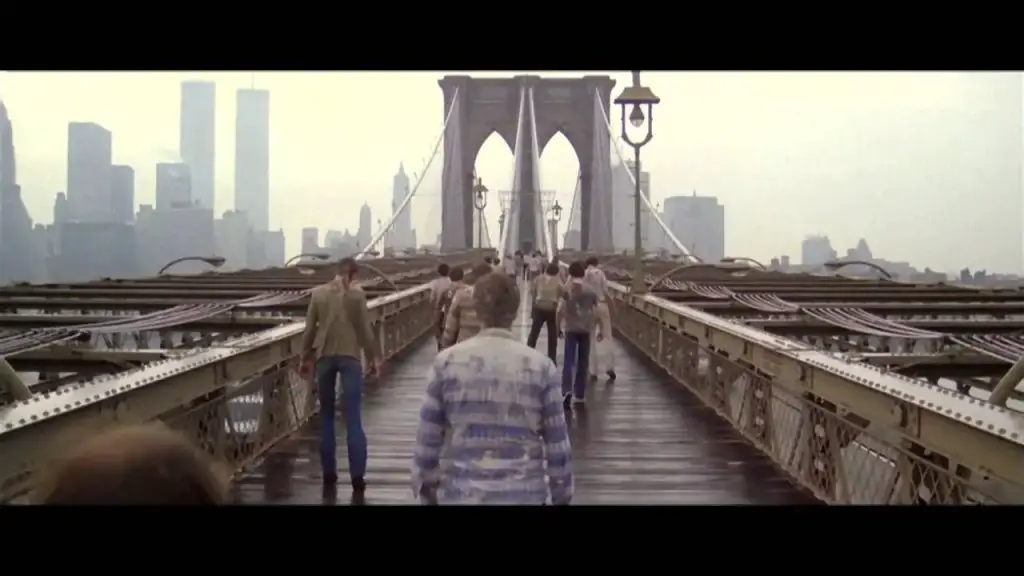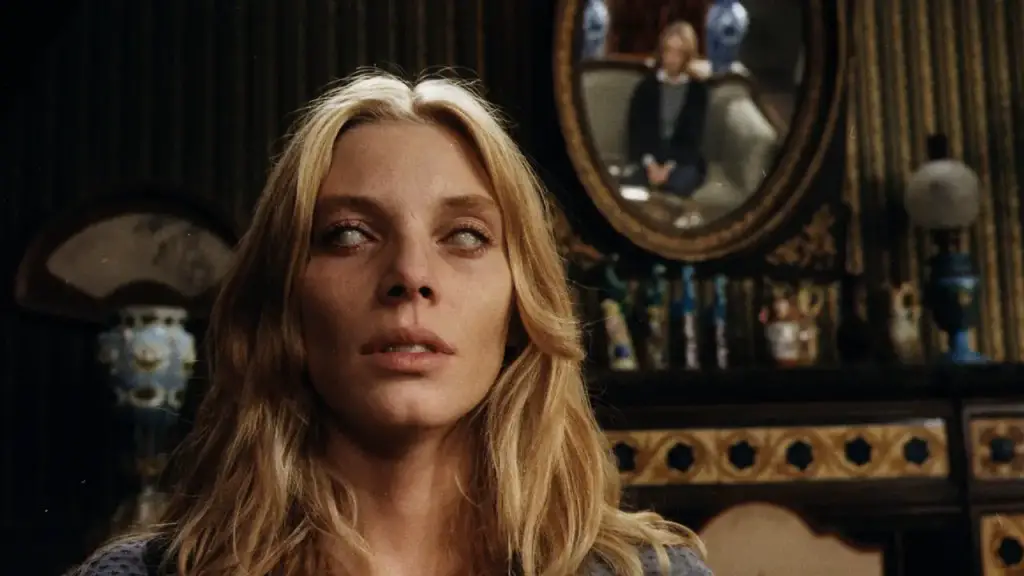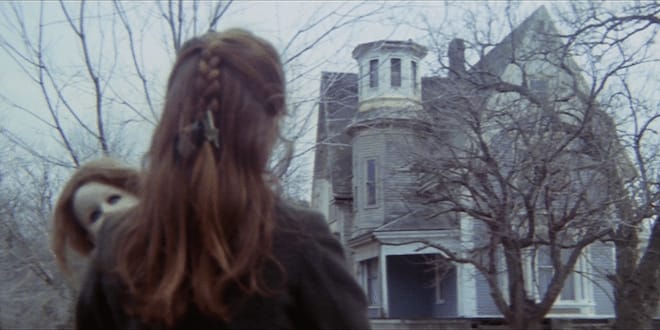By reworking certain fundamental topoi of the darkest Fantastic in a personal macabre and extreme vision, Lucio Fulci has indelibly marked the history of Italian and international film horror.
di Jari Padoan
with the collaboration of
Niccolo Ernesto Maddalon
Lucio fulci (1927-1996) - defined by film critics with the epithets of "Terrorist of Genres" (a definition coined, half-jokingly, by the director himself) e "Poet of the Macabre" — is a name that certainly needs no introduction to every connoisseur and scholar of cinematic horror. And, usually, the first titles that come to mind when talking about the famous Roman director are certain Fear in the city of the living dead, …and you will live in fear! – The afterlife e Quella villa accanto al cimitero, or the ideal trilogy shot by Fulci between 1980 and 1982, which, by reworking certain fundamental topoi of the darkest Fantastic in a personal macabre and extreme vision, have indelibly marked (in blood red hues) the history of international film horror and the so-called gore/splatter sub-genre.

Fulci before Fulci:
from the “musicarello” to the thriller
If one goes to examine a varied and eclectic career like that of Lucio Fulci, it is still surprising today to see how this author has come to devote himself to horror cinema after a long and "suffering" apprenticeship through very different genres, making a notable contribution in particularly in the field of comedy between the fifties and sixties. In the roles of director, screenwriter and lyricist, he juggles between films such as The jukebox boys, with Adriano Celentano (whose famous piece Your kiss is like a rock written by Fulci himself) and picaresque comedies starring Franchi and Ingrassia (How to we robbed the Bank of Italy), in addition to the famous and “scandalous” The Honorable likes women (1972) and the fifteen screenplays that Fulci wrote for as many films shot by two giants of Italian comedy, namely Steno and Totò.
Fulci, now the master of a personal directing style and poetics, later devoted himself to a short series of yellow with dark and dreamlike implications, which fit into the trend “thriller Italian style”, born in the early seventies and characterized by marked erotic influences and awful. Direct filiation, from a thematic and stylistic point of view, of the thrillers of Mario bava (like the basic Six women for the killer), the genre develops thanks to such directors as Serge Martino (to whom Edwige Fenech owes the beginning of her career, in the lead role in the series of erotic-parapsychological mysteries among which the masterpiece All the colors of the dark), the first Dario Argento with his famous "Animal Trilogy", Umberto Lenz and of course Fulci himself, not without having come across as truculent western with Franco Nero and Nino Castelnuovo The colts sang death and it was… time of massacre (1966, screenplay by Fernando di Leo), which Fulci liked to define as an “Artaudian” film in its cruelty.

The director then goes through the seventies filming thriller powerful and original, which combine eroticism soft core, obscure gothic styles and first signs of splatter shameless. One on top of the other, You don't torture a duck, A lizard in a woman's skin e Seven Notes in Black they are still much loved films today, and indeed considered of historical importance for the development of Italian "genre" cinema, but which at the time were tended to be misunderstood by an audience other than the most enthusiastic horrorophiles, panned by leftist film critics (an open secret… or in this case, of Fulcinella) and, curiously, instead praised in right-wing intellectual circles, a singular situation that was the source of a certain perplexity and frustration for Fulci (who politically was certainly not a conservative [1]).
At this point, on the strength of his mastery with the cinema of suspense, Fulci can finally devote himself to his great passion, that of cinema horror, shooting in 1979 Zombi 2. The film can be considered an ideal and unofficial The prequel of zombie movies by George A. Romero, characterized by a particular Caribbean context that brings the horror archetype of the zombie back to its voodoo origins, as the historic film had already done I walked with a zombie by Jacques Torneur, before the socio-political metaphors of Romero's cinema from which Fulci precisely distanced himself.

Zombi 2, regardless of some litigation with Romero's lawyers, will quickly become a small one cult especially abroad thanks to some iconic scenes, such as the underwater fight between a living dead and a white shark, in an evident wink (almost "trash”and of the involuntary comedian) to the numerous and forgettable imitation products of the very famous Lo Squalo by Spielberg, as well as the ending that sees the army of the undead crossing the Brooklyn Bridge at dawn to besiege the Big Apple.
Once Zombi 2 is welcomed with some enthusiasm by the public and genre critics, Fulci then decides to continue on the path ofhorror supernatural, bloody and "zombie-like", planning (together with the trusty screenwriter Dardanus Sacchetti) the film Fear in the city of the living dead, which will become the first chapter of an ideal film saga destined to bring Fulci, in a short time, to the status of master of horror cinema.

The Death Trilogy:
the zenith of Fulcian macabre aesthetics
This is the moment, in Lucio Fulci's film career, in which the eclectic director will express a personal reflection in a horror and granguignolesque key on the common factor ineluctable to every living being, on the great mystery with which humanity has always been confronted: death, and everything that could hide from it over That. Death therefore understood not only as a simple biological cessation of vital functions, but analyzed from a "further" point of view, which, in Fulci's pessimistic vision to say the least, can only reveal itself in one way: horror. According to Fulci's cinema, no consolation or hope, no semblance of peace awaits if a door is opened towards The afterlife, because only horrific zombie killers and absolutely evil forces can filter out of it. A cathartic way of exorcising the idea of nothingness that for Fulci, a Marxist in love with the Fantastic, awaits man after his earthly existence.
As Roger Cailois teaches in the essay L'Incertitude qui viens des Rêves (and as Fulci knew well, who will also publish the collection of horror stories in 1992 Black Moons), the narrative and conceptual procedure followed by the fantastic story in general, and by the ghost stories classical, is precisely linked to how the dimension of the real and the usual gradually (or brutally) gives way to an inexplicable Elsewhere, with everything unknown, unfathomable and above all horrible that comes from it. Mechanism promptly followed by Fulci in his terrifying trilogy, also because, despite being based on subjects written personally by Fulci and Sacchetti, the plots of the films in question reveal numerous references to the tales of horror and mystery of the tutelary gods EA Poe e HP Lovecraft, particularly loved by Fulci (as stated in an old interview with Luigi de Angelis, on the occasion of the Fantafestival in Rome in 1994).

This is evident if one takes into account that at the heart of…and You will live in Terror! – The afterlife there are the Book of Eibon and a cursed picture (whose author, the painter Zweick, is tortured and walled up), which the town of dunwich in New England is the setting for Fear in the City of the Living Dead, and that one of the characters of Quella villa accanto al cimitero is called Whateley such as the dynasty of Yog-Sothoth worshiping sorcerers who act in the tale The Dunwich Horror, written by Lovecraft in 1929.
Fulci, thanks to your own expertise in human anatomy (due to his university studies in medicine, before leaving the faculty to graduate in Literature, attend the Experimental Center of Cinematography in Rome and devote himself to cinema full-time [2]), and with the collaboration of the special effects expert Giannetto de Rossi, subjects the spectator of the "Trilogy of Death" to a systematic and realistic bloodbath, a waking nightmare of a brutality never previously achieved in Italian cinema, not even from the most hallucinatory works of Bava and Argento.

For example with The afterlife — in addition to realizing, right after it Shining by Kubrick, one original variation on the theme of the house or rather the accursed hotel (e undertaker), then reproposed also in Quella villa accanto al cimitero — Fulci takes some typical scenic inventions to the extreme which from now on will enter the "aesthetics" of gore. This is the case, for example, of the explicit images of rotting corpses or of the evisceration of the eyes: this is the sad fate faced by the incautious plumber who ventures into the basement of the hotel where fearsome non-human entities lurk. death, before becoming a zombie herself and giving the same treatment to the hotel housekeeper, played by Veronica Lazar.
The wild and brutal blinding, preferably implemented by the undead on duty, would be linked to the so-called "Look Theme", a typical leitmotif of nineteenth-century fantastic fiction [3], which seems to particularly obsess Fulci's cinema, as demonstrated by the reiterated presence of numerous zoom meeting on the eyes of the protagonists and, in particular, of the protagonists. From Jennifer O'Neill's anguished gaze in Seven notes in black you get to the glassy eyes of the mysterious Emily, the blind girl what about The afterlife it acts as an indecipherable warning presence to those who approach the infernal hotel-portal.

The English actress catriona maccoll will play the leading role in the three respective films (another element that ideally unites the three films, self-contained and not connected to each other from a narrative point of view): a potential messianic savior of humanity from an imminent "zombie-apocalypse" in Fear in the City of the Living Dead, the young heiress of the cursed hotel in New Orleans ne The afterlife and finally an overprotective and paranoid mother in That Villa next to the Cemetery.
By way of curiosity, indeed of particular significance, it is interesting to note that this last film, which can in part recall the aforementioned Shining for the revived (it must be said!) theme of the evil house and for the reflection on the “family prison”, reveals between the lines the Fulci's well-known aversion to psychoanalysis (on which, however, he had focused the psychedelic thriller A lizard in a woman's skin). In the aforementioned Villa next to the cemetery a fearsome new monster is at work, that is a Fulcian reworking of the "psycho-killer” masked and taciturn of superhuman strength and evil, inaugurated by Michael Myers of Halloween (John Carpenter, 1978) and a very frequent figure in the vein of the so-called slasher movie that "ragged" in the XNUMXs. The terrible serial killer-undead in question, however, bears the name to say the least bizarre if not farcical dr. Freudstein, which actually sounds like a fusion of the name of the Creature from Mary Shelley's novel with that of the creator of psychoanalysis…
In cast the three films will be joined by actors and characters such as David Warbeck, Sarah Kellerman (Cinzia Monreale, in the role of Emily), Giovanni Lombardo Radice, Ania Pieroni, Janet Agren, Daniela Doria (also famous for a tragicomic anecdote on the set of Fear in the city of the living dead, tied to sheep entrails used for the scene of his transformation into a zombie), Michele Mirabella e Lucio Fulci himself in brief Hitchcockian cameos: In Fear the director plays a hasty coroner («Weird kind of cardiac arrest!"), neither The afterlife plays the role of a jaunty and “scab” employee of the New Orleans municipal library («Any pretext is always good to slack off among colleagues, apparently…»), while in That mansion… he limits himself to improvising a quick chat with the leading actor, Paolo Malco.

The legacy and profound media influence of the trilogy
It is well known that the Trilogy of Death, further re-evaluated after the disappearance of the Roman filmmaker - a bit like his entire filmography, even if Fulci, who jokingly defined himself as «a director-zombie who was re-evaluated alive» [4], was however able to enjoy the esteem and affection of a hard core of international enthusiasts already during his tormented life) - he will come to inspire a plethora of imitations mostly of US, Japanese and Korean production, as well as being tributed in countless TV shows. Remember, for example, the two-part episode of CSI – Crime Scene Investigation entitled Buried Alive and shot by Quentin Tarantino, in one scene in which we can see a boy wearing a t-shirt that bears the inscription Fulci, The Godfather of Gore, tribute from the director of Reservoir Dogs e Pulp Fiction to one of his ideal masters of the B-movie italics. Fulci was also honored by Tarantino in kill bill, where the protagonist Uma Thurman is buried alive and manages to eradicate two eyeballs with her bare hands).
The influence of Fulci's afterlife trilogy also extended to comics, as demonstrated by famous Italian horror series such as for example Splatter, Dampyr and the historian Dylan Dog by Tiziano Sclavi, as well as the vast galaxy of video games (practically almost all of the current ones survival horror of the latest generation, born in the wake of famous video game sagas such as resident evil, Alone in the Dark, STALKER e Silent Hill). As the filmography is well known horror by Fulci, and obviously in particular the Trilogy of Death, have also for decades been the object of worship also and above all in the environment of the more "extreme" derivatives of music rock e metal, as the Doom and especially the death metal.
In fact, even if it would seem almost a surreal joke (what indirectly links Celentano to the Cannibal Corpse? Answer: Lucio Fulci…), just think of band like the aforementioned Cannibal Corpse, among the initiators of the sub-subgenre brutal death, who have always claimed great admiration for films such as Deep red of Silver and of course The afterlife by Fulci [5], while explicit and definitive is the act of admiration of the group from Caserta who choose to call themselves, simply, Fulci (!), authors of the album coherently entitled Opening the Hell Gates of 2015. Also not only the Candlemass, godfathers of doommetal Scandinavian, dedicate toBeyond the song Demon's Gate contained in the debut album Epicus Doomicus Metallicus from 1986, but even the well-known group takes its cue from the same film glam rock/hairmetal by Europe for the song Seven Doors Hotel, a title that is a reference (among the first ever, as the song came out way back in 1983) as explicit as ever.
In conclusion, much has been said and written about how much Lucio Fulci's cinema has been underestimated [6] (to ascertain that today films such as The colts sang death o Seven notes in black are the subject of analysis and study at film academies), a state of affairs that affected the hardships of his life already undermined by health problems and family mourning, even before his film career. But a full four decades later, his cinematic Death Trilogy still makes us live in fear and remains decidedly (just to quote once again the best known and most aggressive American "fulcian"), ...Death proof.
NOTE:
[1] Claudio Bartolini, Dynamite in genres, monograph on Lucio Fulci in TV movie n.26, 27 June 2017, p.8.
[2] Alexia Kannas, Lucio fulci, in AA.VV., 501 great directors. A complete guide to the masters of the big screen, Taschen, Cologne 2008, p.305.
[3] Consider, for example, stories like Clarimonde by Gautier, The Tell-Tale Heart by Poe and of course a Der Sandeman di ETA Hoffmann (ed.). See Tvetan Todorov, Fantastic literature, Garzanti, Milan 1977.
[4] See Maurizio Colombo, Lucius the grimin Dylan Dog Presents: Almanac of Fear 1995, Sergio Bonelli Editore, Milan 1995.
[5] Cannibal Corpse interviewed at Scion Fest 2010, https://www.youtube.com/watch?v=WO4vV0nCY3g .
[6] See for example Antonio Bruschini, Antonio Tentori, Lucius Fulci. The poet of cruelty, Unknown World-Deep Red, Rome 2004; Paolo Albiero, Giacomo Cacciatore, The terrorist of genres. All the cinema of Lucio FulciLeima, Palermo 2004.

A comment on "The "Trilogy of Death" by Lucio Fulci"